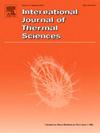How campus green space elements differently influence students' thermal perception during transition seasons?
IF 4.9
2区 工程技术
Q1 ENGINEERING, MECHANICAL
International Journal of Thermal Sciences
Pub Date : 2025-02-11
DOI:10.1016/j.ijthermalsci.2025.109767
引用次数: 0
Abstract
Campus green space (CGS) is an important factor in shaping the outdoor thermal environment, which profoundly affects students' thermal perception. In order to explore its influence mechanism with thermal perception twenty-four CGS observations were installed inside Tianjin University. Through measurements and subjective surveys (N = 48), real-time data for six CGS elements, five outdoor thermal environment parameters, and three thermal perception indicators were obtained. By using statistical analysis, the differential influence relationships and mechanisms of CGS on outdoor thermal environment and thermal perception under natural conditions in transition seasons were then quantified. It was found that: (1) CGS with lower weighted height, moderate sky view factor and lower absorption coefficient can create more pleasant outdoor thermal environment and thermal perception. CGS with lower weighted height and higher sky view factor tended to have a more comfortable thermal perception but violent amplitude, and vice versa was more stable. 13:00 to 14:00 was the common node where the best outdoor thermal environment and thermal perception appeared. (2) Weighted height, absorption coefficient, and sky view factor had differential effects on thermal perception by modulating air temperature, surface temperature, relative humidity, and mean radiant temperature. Weighted height was the prerequisite for the overall outdoor thermal environment and thermal perception, with nine pathways and 67.34 % contribution. Mean radiant temperature was the key mediator for the tandem influence paths. (3) It is recommended to control the weighted height around 2.50m, choose materials with moderate or low absorption coefficient values and light colors, and shape the sky view factor consisting of closely planted deciduous trees. These results can provide a valid basis for the integrated improvement of thermal perception during the CGS design process.
求助全文
约1分钟内获得全文
求助全文
来源期刊

International Journal of Thermal Sciences
工程技术-工程:机械
CiteScore
8.10
自引率
11.10%
发文量
531
审稿时长
55 days
期刊介绍:
The International Journal of Thermal Sciences is a journal devoted to the publication of fundamental studies on the physics of transfer processes in general, with an emphasis on thermal aspects and also applied research on various processes, energy systems and the environment. Articles are published in English and French, and are subject to peer review.
The fundamental subjects considered within the scope of the journal are:
* Heat and relevant mass transfer at all scales (nano, micro and macro) and in all types of material (heterogeneous, composites, biological,...) and fluid flow
* Forced, natural or mixed convection in reactive or non-reactive media
* Single or multi–phase fluid flow with or without phase change
* Near–and far–field radiative heat transfer
* Combined modes of heat transfer in complex systems (for example, plasmas, biological, geological,...)
* Multiscale modelling
The applied research topics include:
* Heat exchangers, heat pipes, cooling processes
* Transport phenomena taking place in industrial processes (chemical, food and agricultural, metallurgical, space and aeronautical, automobile industries)
* Nano–and micro–technology for energy, space, biosystems and devices
* Heat transport analysis in advanced systems
* Impact of energy–related processes on environment, and emerging energy systems
The study of thermophysical properties of materials and fluids, thermal measurement techniques, inverse methods, and the developments of experimental methods are within the scope of the International Journal of Thermal Sciences which also covers the modelling, and numerical methods applied to thermal transfer.
 求助内容:
求助内容: 应助结果提醒方式:
应助结果提醒方式:


